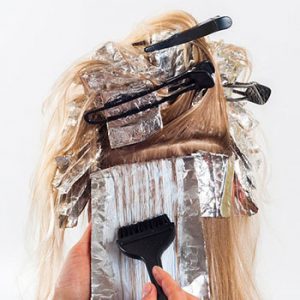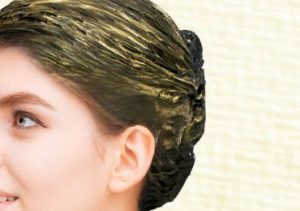Men and women worldwide dye their hair regularly, exposing them to harmful chemicals. According to experts, chemically-laden hair dye can be harmful and cause scalp inflammation and hair loss in some people, although it’s unclear how long-term effects will manifest.
A mixture of harsh chemicals in hair colors and dyes
Melanin, a compound built up from tyrosine, is a natural pigment found in human skin, eyes, and hair. Melanin accounts for the color of your hair, skin, and eyes. Blondes, for example, have fewer melanin molecules than brunettes.
On the other hand, hair dyes use an absolute mixture of chemicals to alter the color of the hair. They often contain ammonia, hydrogen peroxide, and many others.
Research has been conducted on the long-term effects of hair dyes, including possible cancer risks. However, many of the findings are inconsistent or inconclusive. In other words, this means that experts don’t fully understand the dangers of these dyes in the long run.
Risk of Frequent Hair Coloring
You may be at greater risk of cancer if you color your hair frequently. Researchers found that women who used permanent dye for a year or longer doubled their chances of developing bladder cancer. Permanent dye users have a three-fold higher risk if they’ve been using the color for less than a year.
Other than bladder cancer, it is essential to be aware of other diseases. Those who dyed their hair with dark permanent dyes and colored eight or more times a year for 25 years had a doubled risk of non-Hodgkin lymphoma (NHL).
Taking a risk with hair coloring on Your DNA
Permanent dyes may increase your risk of bladder cancer if you have a genetic predisposition. Women absorbed ammonia through their skin during the dyeing process and flushed compounds derived from ammonia. There were three slow genes associated with bladder cancer, according to a study.
Pregnancy and hair coloring
A college of obstetricians and gynecologists says that pregnant women can use hair dyes because of minimal absorption through the skin. In any case, pregnant women should be careful when coloring their hair, especially with coal-tar-based products. Research suggests that permanent dyes increase the risk of cancer.
Signs of problems caused by dye
After coloring your hair, keep an eye out for signs of problems. Redness, irritation, itching, scaling, flaking, or blisters on the scalp should raise concern. If the symptoms persist or are severe, seek medical attention from a dermatologist or family doctor.
It is also possible for hair dyes to cause less severe medical issues. For a few days, the skin on the scalp may be tinted, which may cause embarrassment. It is believed that bleach can strip away the protective layer of the fibers. Bleaching and lightening can sometimes result in limp, lifeless hair as well as hair loss.
Precautions:
For best results, follow these tips when dying your hair with a boxed product:
- Apply the dye to your hair after conducting a test patch to rule out allergic reactions.
- While applying hair dye or mixing it, never use your hands without gloves.
- After dying your hair, rinse it well with water.
It is best to carefully follow all instructions that come with your hair dye box and avoid formulas that contain PPDA if you’re allergic.


















